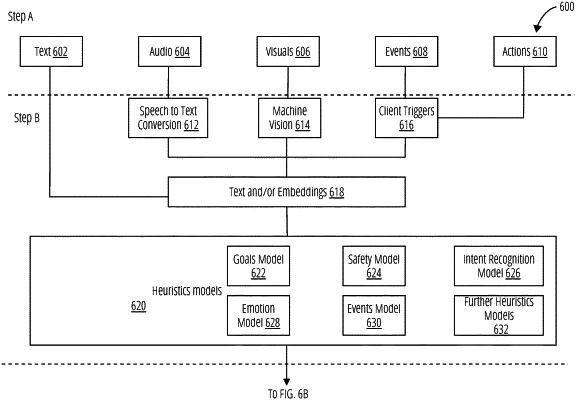| CPC G06F 40/40 (2020.01) [G06N 20/00 (2019.01); G10L 15/22 (2013.01)] | 20 Claims |

|
1. A method for observation-based training of an Artificial Intelligence (AI) character model, the method being implemented with a processor of a computing platform providing the AI character model, the method comprising:
receiving, by the processor, log data including interactions of a first user and a second user; and
adjusting, by the processor and based on the log data, parameters of the AI character model to cause the AI character model to mimic behavioral characteristics of the first user in follow-up conversations with further users, wherein:
the AI character model includes a first plurality of heuristic machine learning models and a second plurality of primary machine learning models, the first plurality of heuristic machine learning models including an events model, an intent recognition model, and an emotion model, and the second plurality of primary machine learning models including a large language model, a goals and actions model, and an animation and gesture model; and
the adjusting the parameters of the AI character model includes:
pre-processing the log data to obtain a plurality of streams, the plurality of streams including a first stream of text pronounced by the first user during the interactions, a second stream of actions performed by the first user during the interactions, and a third stream of events occurring during the interactions;
running the plurality of streams through the first plurality of heuristic machine learning models to produce intermediate outputs;
composing the intermediate outputs into templated formats for the second plurality of primary machine learning models; and
feeding the templated formats to the second plurality of primary machine learning models.
|